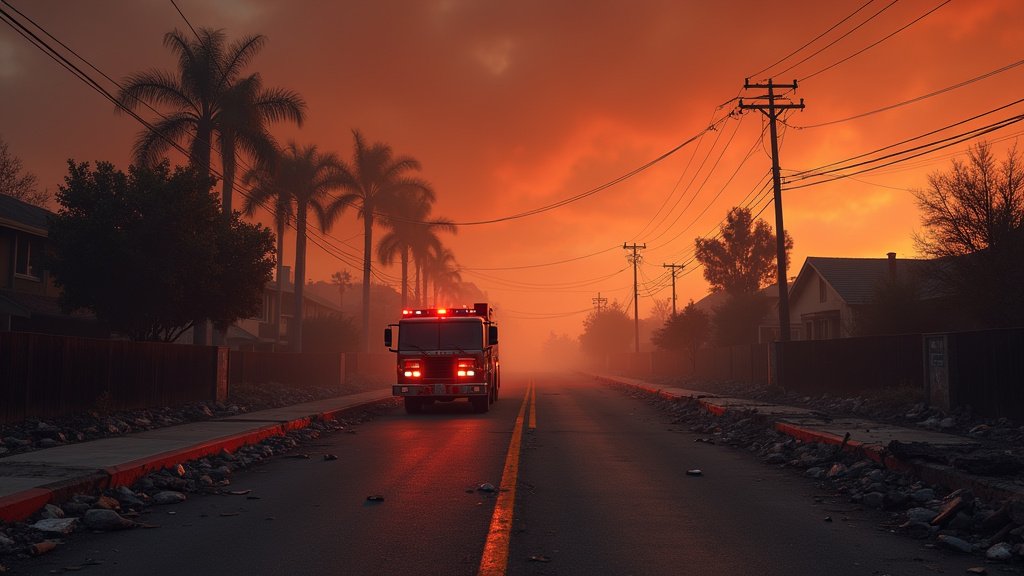Record $101 Billion in U.S. Weather Losses for First Half of 2025, Fueled by Devastating Los Angeles Wildfires
Washington D.C. – The United States experienced an unprecedented $101.4 billion in losses from weather and climate disasters during the first six months of 2025, marking a grim new record for the costliest start to any year in U.S. history. This staggering figure, compiled by the nonprofit research group Climate Central, underscores the escalating financial toll of extreme weather events across the nation.
A New Benchmark for Disaster Costs
The first half of 2025 saw 14 separate weather and climate events, each causing at least $1 billion in damages. This total far surpasses historical averages and places the year on a trajectory to be among the most expensive on record for natural catastrophes. The data, now managed by Climate Central after the discontinuation of a similar government program, provides a critical snapshot of the nation’s vulnerability to extreme weather.
Los Angeles Wildfires: A Catastrophic Contributor
Dominating the economic impact were the ferocious wildfires that swept through Los Angeles in January 2025. These devastating fires, including the Palisades and Eaton fires, are estimated to have caused over $60 billion in damages, making them the costliest wildfire event on record in the U.S.. The scale of destruction was immense, with thousands of homes and businesses lost, and significant property damage estimated between $28.0 billion and $53.8 billion. Beyond direct property damage, business disruptions are projected to cost Los Angeles County billions in lost economic output over the next five years. This singular event highlights the extreme vulnerability of densely populated areas to wildfire, especially when amplified by climate change and specific meteorological conditions.
Beyond the Flames: Severe Storms Add to the Toll
While the Los Angeles wildfires represented the largest single loss, they were not the sole driver of the record-breaking half-year. Severe storms, including multiple destructive tornado outbreaks across the central and southern United States, contributed substantially to the overall damages, accounting for more than $40 billion in losses. These events, characterized by large hail and intense rainfall, demonstrate the diverse range of weather hazards impacting the nation.
Database Revival Provides Crucial News and Data
This comprehensive analysis of 2025’s first-half disasters comes from Climate Central, which has revived the acclaimed Billion-Dollar Disasters database. This vital resource was previously maintained by the National Oceanic and Atmospheric Administration (NOAA) for decades but was abruptly shut down in May 2025 by the Trump administration, citing evolving priorities. Adam Smith, the former lead scientist for NOAA’s program, has spearheaded its relaunch at Climate Central, ensuring continued access to this critical data for policymakers, insurers, and the public. The revival of this database offers essential news and insights into the tangible economic consequences of climate change.
Amplifying Factors: Climate Change and Vulnerable Development
Experts point to a confluence of factors driving these escalating costs. The amplification of extreme weather events due to climate change is a primary concern, making events like the Los Angeles wildfires more likely and more intense. Furthermore, increased human exposure—driven by development in vulnerable areas such as coastlines, floodplains, and the wildland-urban interface—coupled with often insufficient building codes, exacerbates the damage when disasters strike. This analysis puts a spotlight on how human activity, both through climate change and development choices, directly contributes to these record financial losses.
A Concerning Trend for the Future
The $101.4 billion figure for the first half of 2025 is not an isolated incident but rather part of a clear and concerning trend. The past decade has seen a significant acceleration in the frequency and cost of billion-dollar disasters, with average annual inflation-adjusted costs quadrupling since the 1980s. The full economic toll is likely even higher, as the current estimates do not encompass environmental degradation, health impacts, or supply chain disruptions. As more potential billion-dollar events from 2025 await final assessment, the nation faces the ongoing challenge of managing escalating disaster risks in a rapidly changing climate.





